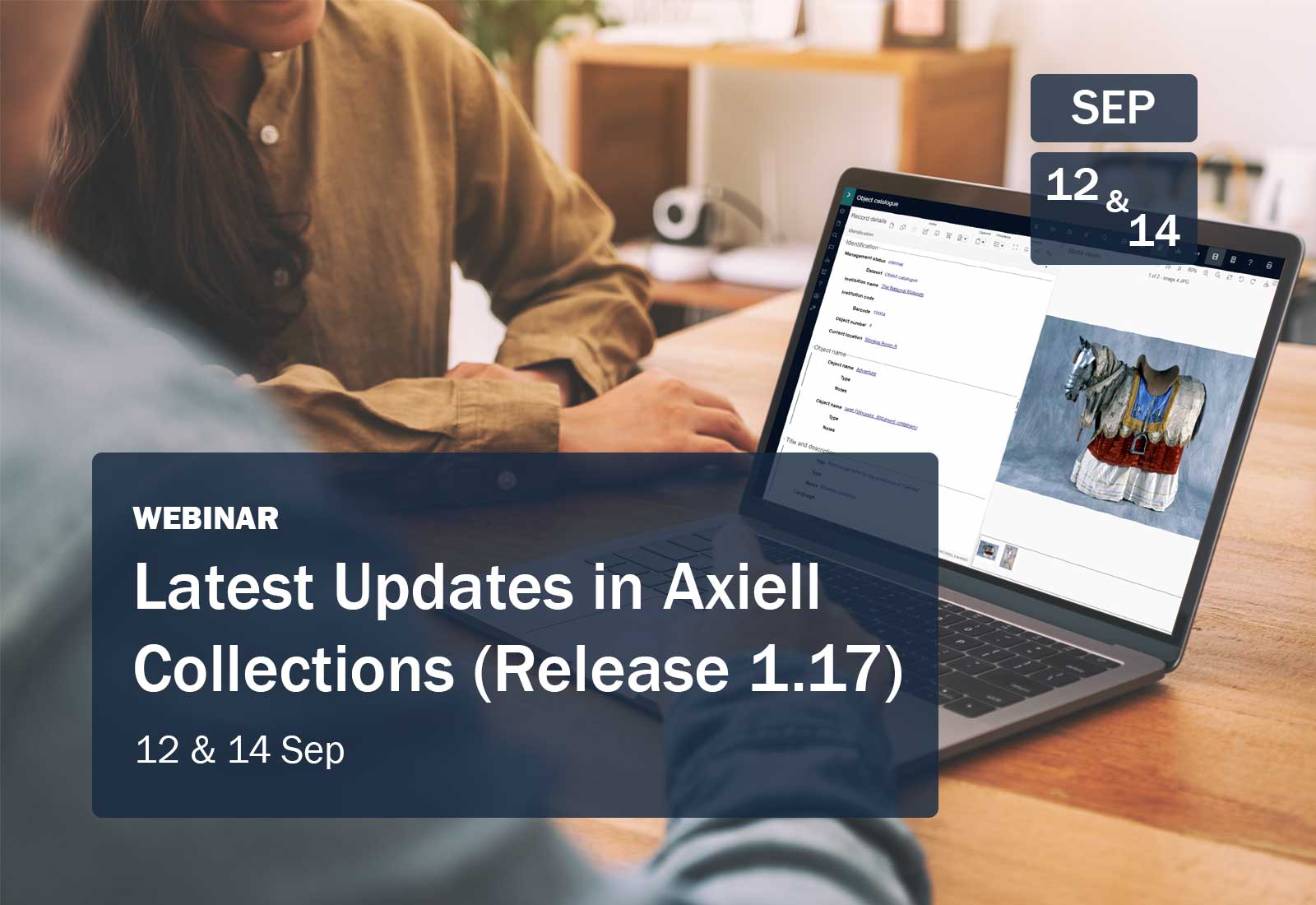Setting the appropriate levels of user permissions to balance data security with user engagement
The inspiration for this blog post dates back to November of 2012 when I attended the first Middle Eastern EMu User conference hosted in Doha, Qatar. I was an EMu client based out of Scotland at that time, and one evening as clients and Axiell staff were engaging in frank conversations, someone spoke up about maintaining strict controls over staff user permissions and access to different modules in their system. Several of us nodded sympathetically backed by notions of best practice, tight protocols, and the sanctity of one’s longing for pristine data (…or just good data). A voice then cut through the chatter, arguing for a much more liberal approach, and went on to explain why. I was fascinated by this debate, and it was a turning point in how I looked at system access and the notion of engagement and ownership of heritage data and systems.

AFFECTING YOUR SYSTEM AND STAFF
In conversation with System Administrators, I’ve encountered a range of approaches, and sometimes strong feelings, surrounding how much access to grant staff in their database. One way or another, the extent of administrative controls and user permissions applied in your collections management system will directly impact your staff’s ability to leverage the full potential of the system. Moreover, it will affect the institutions ability to leverage the full potential from your staff.
To help make my point, I’d like to draw a comparison to the old Access vs. Preservation argument. When an important object sits in a dark vault for preservations purposes, it will have its life prolonged, but it also risks loosing significance due to a lack of engagement. Alternatively, granting too much access may cause deterioration of an object under threat from environmental conditions and the handling of well-intentioned staff. The safeguarding of collections data within one’s own collections management system, and the ability of archive or museum staff to contribute or access it, presents a very similar challenge.
USE IT OR LOSE IT
Consider a scenario wherein staff are unable to access information (metadata or resources), or they don’t know where these are located, or they are hindered in the timely execution of their work. If specialists in diverse museum departments are confronted with what they perceive as an obstructive collections management system environment, the precious information held in the system will become distant, and the mechanisms in place to effectively store and uncover these will become unfamiliar to them. Depending on the extent of awareness of system modules, features, and settings, users may not distinguish between imposed restrictions and perceived shortfalls in a system. If a large enough number of users are unhappy with a system, they may move to circumvent or even replace it with “easier” home grown solutions outside of their dedicated collections management system. In this scenario, the knowledge about their collections, as well as the infrastructure intended to safeguard them, are both at risk, compounding the roadblocks to effective collections management.
A BIT OF GIVE AND TAKE
The discussion which took place that evening in Doha, had multiple levels to it. Beyond the implications of restricted access, there is also the practical question of how to help staff realise broader objectives. Museum staff are subject experts in their field, but may (depending on the individual) only be peripherally concerned with the technologies which are prescribed to record their work. Institutionally, the effectiveness of a relational database or enterprise system is based on the notion of collaboration, building momentum, and leveraging the collective knowledge of the whole. So, although database administrators may be tempted to get everyone to adhere to strict protocols, the reality of collaborative work requires a bit more give and take. Without applying an inclusive amount of access, the data and resources stored in your system may risk loosing significance due to over-protection and lack of engagement.
CAREFUL WHAT YOU WISH FOR
Moreover, if an Administrator becomes a kind of “gatekeeper” who must vet, approve …. or even input data on behalf of their colleagues, they’re setting themselves up for a LOT of extra work. Worse, there is a risk of breeding a culture of dependency on the Administrator, and estranging the staff from their accountability for the content of the system. For numerous reasons, no one person should be responsible for that much cultural heritage data (but this is a whole other blog post!).
GIVE YOUR USERS A VOICE AND EMPOWER THEM
If your institutional objectives include preserving and leveraging the diversity of knowledge held by your staff, every effort should be made to nurture the relationship the subject experts and specialists have with your (no, their!) collections management system. It should make their lives easier, and should allow them to take ownership of the institution’s collective knowledge while building on each other’s efforts.
Sensitively policing the protocols and standards by which content is entered into a system certainly provides one of the cornerstone of data searchability, preservation, and management. However, the foundation of all work in collections management systems is nurturing the ability and willingness of staff to systematically contribute and take ownership of the content. To do this, give your users a voice and empower them through regular consultation about their system needs, and devise an effective training schedule so that everyone is familiar with the tools at their disposal. Beyond lightening the load for the database administrators, a culture of constructive collaboration will increase efficiency, satisfaction, and help realise your overall goals.
Read our clean data blog for tips on how to clean your collections data and keep it clean without limiting user engagement.




